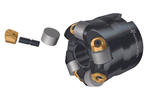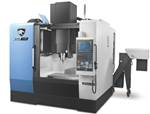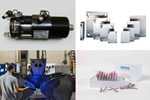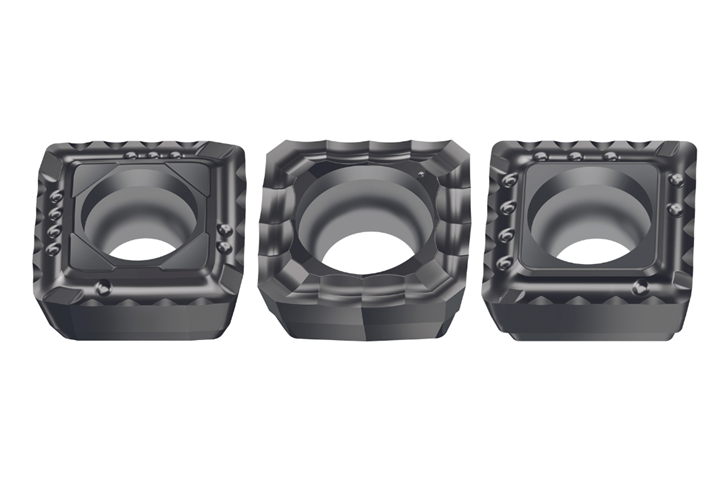PVD-Coated, Uncoated Insert Grades to Reliably Drill Aluminum
Walter USA highlights the WNN15 and WN15 available for indexable insert drills that specialize in machining aluminum alloys.
Walter’s new WNN15 grade, E77 geometry. Shown left to right: P4840C, P4840P and P2840 inserts. Photo Credit: Walter USA
The low-adhesion WNN15 grade for Walter USA indexable insert drills is now available to industry. The drills that accept these insert types include D4120, D3120 and B3212.DF through B3214.DF in insert versions P4840, P2840 and LCGX. According to the company, the WNN15 grade, offering four indexes per insert, is primarily designed for drilling wrought or cast aluminum alloys (ISO N workpiece group). Aluminum has become an important mold material when considering mold prototyping as well as energy efficiency.
The drilling grade features a hard substrate, which ensures high cutting edge strength and sharpness on indexable inserts. In addition to process reliability, the inserts offer a high level of wear resistance to provide long tool life — up to 200% depending on the application, Walter cites — even at very high cutting speeds. These capabilities reportedly make drilling with WNN15 indexable inserts more cost-effective than comparable PCD tools.
A physical vapor deposition (PVD) coating is applied to WNN15 inserts using a high-power impulse magnetron sputtering (HiPIMS) process to create a smooth, dense surface. The rake faces are also polished. As a result, chip evacuation is smooth and built-up edge is avoided on the tool/workpiece interface.
In addition, Walter introduces uncoated polished grade WN15 with a fine-grained substrate, also suitable for aluminum machining. This uncoated grade complements the coated PVD grade WNN15 described above but serves as an “economical alternative” with approximately 30% lower cost/cutting edge. The drills that accept WN15 grade inserts include D4120, D3120 and B3212.DF. through B3214.DF in insert versions P4840, P2840 and LCGX
Related Content
-
Solving Mold Alignment Problems with the Right Alignment Lock
Correct alignment lock selection can reduce maintenance costs and molding downtime, as well as increase part quality over the mold’s entire life.
-
It Starts With the Part: A Plastic Part Checklist Ensures Good Mold Design
All successful mold build projects start with examining the part to be molded to ensure it is moldable and will meet the customers' production objectives.
-
6 Ways to Optimize High-Feed Milling
High-feed milling can significantly outweigh potential reliability challenges. Consider these six strategies in order to make high-feed milling successful for your business.











.png;maxWidth=300;quality=90)

